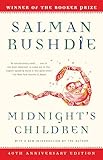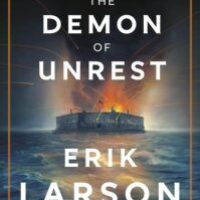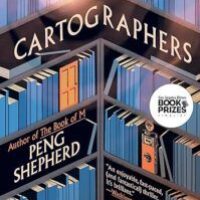
I often talk with other writers about the engines of stories: features of character, plot or even object that allow the narrative happenings to unfold. Sometimes this engine can be literal, as in Flannery O’Connor’s “A Good Man Is Hard to Find.” O’Connor’s classic tale features a family on a road trip: An actual vehicle moves the plot along from moment to eventual tragic moment. In other iconic works, the engine is more difficult to pinpoint. By whatever strange magic Haruki Murakami’s Kafka On The Shore guides us through its pages, it is not so simple as the causal churning of gears endemic to most plots. More the hidden engine of dreams, which we are better able to intuit than we can explain.
 Of all such engines, the “roving rambler” archetype has fascinated me most over the years: fast-talking, ever-moving characters of modern literature liable to take us on strange, unpredictable rides by way of their fidgety feet and hyperactive minds. Restless and unrestrained, they get themselves into trouble and have to work their way out of it. They are the consummate raconteurs; their stories are powered as much by their madcap interactions as by their introspective asides. There tends to be something bothering them, but they don’t want to disclose their distress, or will do so only discursively. Most often they’re found in cities, where the urban landscape’s constant onslaught of sites, sounds, and strangers naturally lends itself to rambling. In fact, to allow the protagonist of my own novel, Pay As You Go, as much space to ramble as he would like, I went about making up a city from scratch, then populating it with as many interlocutors as would fit its tangled grid. His name is Slide, and the city’s name Polis.
Of all such engines, the “roving rambler” archetype has fascinated me most over the years: fast-talking, ever-moving characters of modern literature liable to take us on strange, unpredictable rides by way of their fidgety feet and hyperactive minds. Restless and unrestrained, they get themselves into trouble and have to work their way out of it. They are the consummate raconteurs; their stories are powered as much by their madcap interactions as by their introspective asides. There tends to be something bothering them, but they don’t want to disclose their distress, or will do so only discursively. Most often they’re found in cities, where the urban landscape’s constant onslaught of sites, sounds, and strangers naturally lends itself to rambling. In fact, to allow the protagonist of my own novel, Pay As You Go, as much space to ramble as he would like, I went about making up a city from scratch, then populating it with as many interlocutors as would fit its tangled grid. His name is Slide, and the city’s name Polis.
In honor of the literary wanderers that precede Slide, I’ve composed a small collection of novels, novellas, and a short story that feature roving ramblers of various stripes. Some are chattier than others, but they all boast that penchant for discursive aside and spontaneous interaction characteristic of the archetype—and perhaps the only appropriate response to modern life’s mania.
 Luster by Raven Leilani
Luster by Raven Leilani
Edie moves through New York with both the thrust of desire and the comfort in squalor mainly found in twentysomething city dwellers. Her apartment is a mess, the coworkers she’s slept with have taken to avoiding her, she’s jaded about the performative hypocrisy of her employer, a publishing house, and wary of the more pleasant-seeming Black woman they recently hired, as if to replace her. (Which they do.) She’s also sleeping with a married man. It’s an explosive cocktail, lit on fire by Leilani’s sharp wit and kinetic pace as we move from city to suburbs and back again. Edie misses nothing: She divulges about marital relations, erotic pleasure, absurdities of race, painting, and family ruptures, whether others or her own. As for what’s bothering her? It’s a little bit of everything.
 The Adventures and Misadventures of Maqroll by Álvaro Mutis
The Adventures and Misadventures of Maqroll by Álvaro Mutis
A contemporary of García Márquez and a poet for most of his literary life, Mutis began writing this series of novellas in his sixties—almost as a surprise to himself—after a recurring character from his poems began to speak to him in more fully formed prose. Maqroll the Gaviero, or Watcher, is a standout in modern literature, a world-weary wanderer more at home in the worn tomes always on his person than in the brash, semi-legal farces in which he finds himself. We follow him up the length of a jungle-piercing river in search of dubious riches and to the heat-drenched bustle of a teeming port city, rubbing shoulders with various criminals, accomplices, lovers, and friends along the way. Farcical, baroque, and always in search of meaning, these stories operate in the highest echelon of linguistic artistry.
 Speedboat by Renata Adler
Speedboat by Renata Adler
A resurfaced classic thanks to the good folks at NYRB, Speedboat is that rare balance of stylistic panache and timeless introspection. Adler uses her loosely formed protagonist Jen Fain, a reporter in 1970s New York, as a cipher through which to amble from moment to reflection to ironic anecdote to quips of dialogue and so on. Here the paragraph is the unit of currency, with few “scenes” lasting longer than half a page (and many only a few lines) before a line break takes us to the next tangential moment. Adler operates as much as a DJ as she does a composer, stitching together those disparate elements of city life that harmonize by way of counterpoint. Speedboat reflects that shaken-up experience any city dweller knows all too well, like so many radios with loose dials.
 Open City by Teju Cole
Open City by Teju Cole
To ramble may mean to speak at length, but it is not necessarily without elegance. Such is the case with Cole’s Open City. The protagonist Julius establishes the novel by setting off on long, aimless walks through New York to puzzle over some broad existential concerns (including his own). In measured, meditative prose, Cole sweeps us through the city’s multifaceted denizens, drawing out the stories within them like strands to form the web that holds us together. Rarely does writing capture that meandering pace as liable to seduce as it is to surprise.
 Invisible Man by Ralph Ellison
Invisible Man by Ralph Ellison
Do we still talk about The Great American Novel? The conversation seems to have died off, and rightly so. Should it resurface, please accept Ellison’s Invisible Man as my entry. His nameless narrator-protagonist is one of literature’s greats: a would-be upwardly mobile young man with that balance of naivety and boundless hope that makes him the perfect foil for a vicious, unforgiving world. The setting is 1950s America—for a Southern black man relocating to Harlem, New York, a few things are bound to go wrong. Ellison’s prose can be grandiose, slapstick, Shakespearean, elegiac, and very, very funny. He also whips up a mean scene. To move with his invisible man through America is to see the internal workings of an awe-inspiring machine too busy going about its terrible work to notice its own self.
 A Confederacy of Dunces by John Kennedy Toole
A Confederacy of Dunces by John Kennedy Toole
Toole’s novel, published posthumously in 1980, is the one entirely third-person entry on this list, and not without its resultant strengths. After all, it would be a touch too much to have to also be in the mind of our protagonist, Ignatius Jacques Reilly, given that he already has no qualms about spewing his every thought to all those he encounters. We go with him through the back alleys of a slang-dense New Orleans as he tries on various hapless professions only to rebel against them with philosophic diatribes. He’s delightfully gross and self-satisfied. Whatever prime he might have had is so long gone hardly a trace remains. A Confederacy of Dunces revels in the absurd, while all the while keeping at its center the beating heart in all such stories of roving ramblers: how to make a sense of a senseless world.
 Outline by Rachel Cusk
Outline by Rachel Cusk
More in the spirit of the exception that proves the rule, Cusk’s Outline is not so much centered on a rambler as it is an anti-rambler—an often silent protagonist whose quiet presence serves as the backdrop for others to thereby speak at length. And speak they do. These characters’ reflections plumb deep into the nature of love, marriage, divorce, family, ambition, writing, jealousy, you name it. It’s as if she wrote with a scalpel instead of a pen, to better lay out the contents of the heart. Ultimately we are given the shape of her protagonist not directly by Cusk—as is the case of most novels—but by the protagonist’s descriptions of the other characters and the world around her. Through these, we can intuit her shape by the central space left untouched.
 “Bettering Myself” by Ottessa Moshfegh
“Bettering Myself” by Ottessa Moshfegh
Ms. Mooney is drunk at the opening of this story, and she’s still a bit drunk by its end. Chances are she’ll keep at it long after we leave her. But how else could Moshfegh have her freewheel through the shambles of a life only barely being held together—one where she takes naps between classes in a sleeping bag beneath her desk, falsifies students’ test answers to avoid being fired, cries publicly on dates with her ex-boyfriend, and pulls together a mere few days of sobriety before devolving again? This story, for which Moshfegh won the Paris Review’s Plimpton Prize for Fiction, moves at the pace of an Olympic sprint, crashing through the finish line with a nosedive. It is the best of what is often meant by voice in fiction: active, sly, and inventive.
 Texaco by Patrick Chamoiseau
Texaco by Patrick Chamoiseau
Saul Bellow once rudely quipped, “Who is the Tolstoy of the Zulus?” In response, journalist Ralph Wiley wrote that clearly Tolstoy was, just as Chinua Achebe was the Achebe of Europe. Some writers are so singular in their universal appeal that their works bridge any manner of geographic or cultural boundaries. In that case, Patrick Chamoiseau is the Chamoiseau of the Caribbean, and of everywhere else. His masterpiece Texaco resides on a tier with few others for company, such as One Hundred Years of Solitude and Anna Karenina. If I sound grand, it is only to speak of an unashamedly grand novel, one that spans three generations, contains a cacophony of creolized voices, and confronts the legacy of French colonial slavery and its aftermath, as seen through the eyes of our wizened heroine, Marie-Sophie Laborieux. She is the one to guide us through the proclamations of emancipation, the eruptions of volcanoes, the founding of the townships and the memories of those gone. If there is more original prose to be read I have yet to find it. Chamoiseau’s novel is a testament to storytelling as a means of existential survival.
 Sweetbitter by Stephanie Danler
Sweetbitter by Stephanie Danler
Tess wants to craft a new identity following her move to New York City. “Let’s say I was born in late June of 2006 when I came over the George Washington Bridge,” she says, in an attempt to erase her past. In respect of the city she depicts, Danler uses the working life of a high-end restaurant as a way to make New York City accessible to all readers. It is at this restaurant where Tess meets her kinetic co-workers, and undergoes a sensuous education in food, wine, and desire. As with other protagonists on the list, Tess often functions more as a cipher, but ultimately it is her own sense of intuiting that a grander, more sophisticated life is within reach that powers the novel. She is in search of the inarticulable, and it keeps her on the move. Once read, this beauty of a novel can be reopened at any page, and devoured like a delicious appetizer.
Midnight’s Children by Salman Rushdie

From the novel’s onset, Rushdie’s Saleem Sinai is struggling to unleash a flood of stories. The long, spectacular unleashing of this torrent is what keeps us readers immersed in Sinai’s outpourings. I am partial to these novels that push English to its limits, forcing it to reconfigure into the new arrangements required of a story it’s never seen before. Here is one that takes on no less than history as its subject matter, with the coincidence of Sinai’s birth tying him to the fate of a newly independent India. Throw in a wide wild cast of characters, a couple mad happenings, and some magic along the way, and you have yourself a masterpiece (so expertly rendered that it won The Best of the Booker prize twice).
Artwork: Edvard Munch, Walking in the Garden (1930)
The post Roving Ramblers Make the Best Protagonists appeared first on The Millions.













